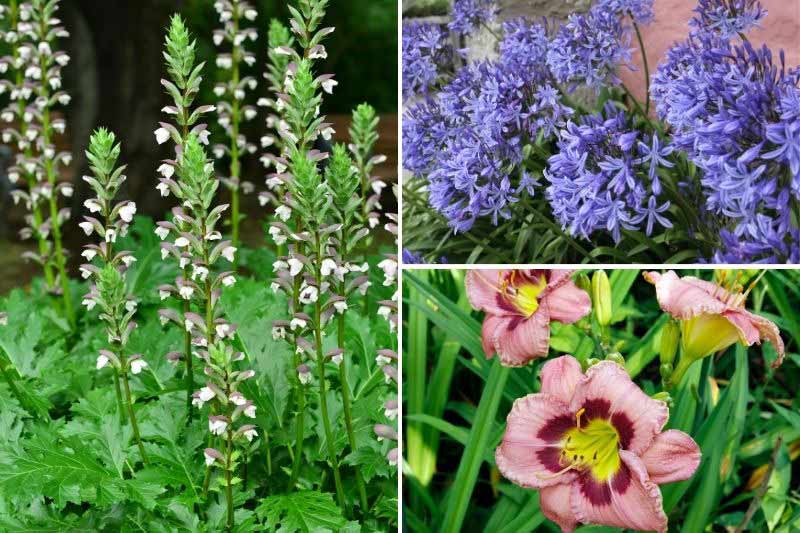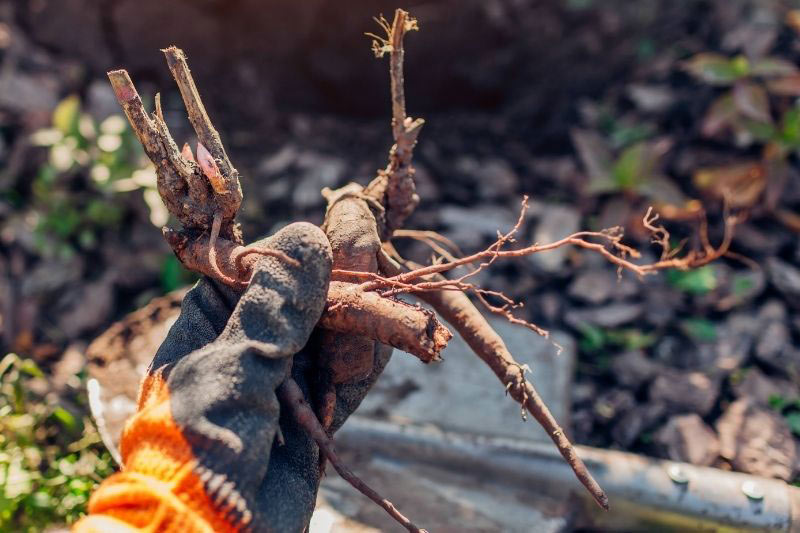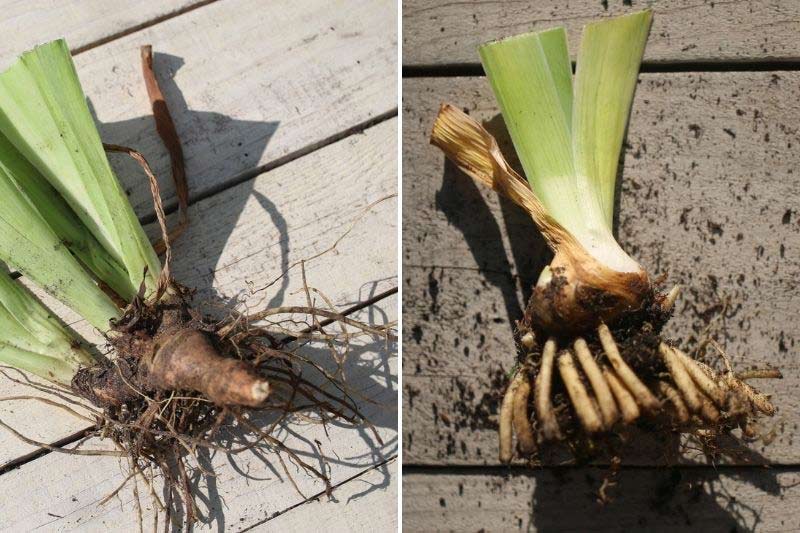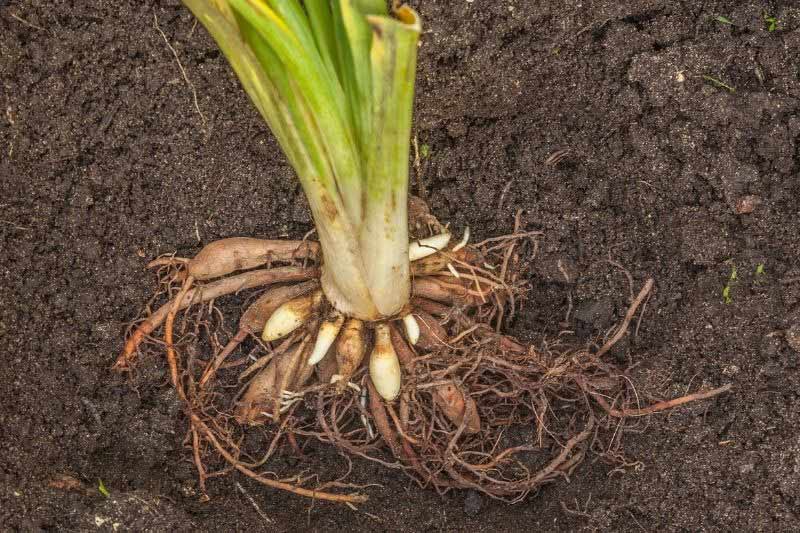Most of the time we choose perennial plants for our gardens in buckets or in pots, simply because most of these plants are usually offered this way by nurseries or garden centres. But more and more perennials are available as bare roots between November and the end of March; examples include Acanthus, Astilbe, Cœur de Marie, Agapanthus, Hemerocallis, Hostas or Aconite, not forgetting Iris germanica as rhizomes, lily of the valley and of course peonies. For edible and fruiting perennials, it is common to buy strawberry plants as bare roots as well as asparagus crowns (asparagus crowns).
Although they offer many advantages, perennials sold as bare roots must be planted quickly to prevent roots from drying out or being damaged. If you cannot plant them on arrival, potting them up for later planting in spring is the solution. How to pot up perennials bought as bare roots? Discover correct techniques in this tutorial.

First of all, why buy perennials as bare roots?
As the name suggests, these perennials are supplied without container or substrate, the roots exposed after lifting from the nursery. They are more ecological, cheaper to buy and provide excellent establishment thanks to significantly better root quality. They are also easy to plant, because they generally do not require very deep holes.

Which compost to use for potting up bare-root perennials?
A multi-purpose potting compost will do very well, especially if used only for temporary potting before planting out. You can also mix 2/3 good-quality garden soil with 1/3 potting compost.
Which type of pot to choose?
You can use reclaimed nursery plastic pots or biodegradable pots that can be planted directly with the perennial. Terracotta pots are also ideal. Choose size according to your perennial and its root system: it should not be too cramped and must be able to start developing properly. Aim for pots of at least 11 cm diameter, ideally 2 or 3 litres.
Steps to pot up bare-root perennials
Check root condition beforehand: roots should be healthy, free from spots and fleshy. If roots are dried out or affected by mould, that is not a good sign for successful establishment...
Start by dressing the roots lightly:
- If plants look a little wilted, soak roots for up to one hour in a bucket with a little water. Handle with care: do not break pieces off and avoid damaging the buds
- With a sharp, disinfected pruning shear, cut back excessively long roots and remove dried or damaged parts to stimulate growth of the root hairs

Then pot up your perennial:
- Ensure compost is fairly moist
- Part-fill pot with compost
- Place perennial in pot: roots should be evenly spread out
- Top up with compost. Note: many perennials need planting with the collar slightly above soil level. This allows plant to receive daylight and reduces risk of rot
- Firm gently by hand to avoid air pockets
- Water
- Label pots or use tags to record names; most have deciduous foliage and will be difficult to tell apart

Care for perennials before planting out
- Keep plants frost-free, in a greenhouse, unheated conservatory or cold frame.
- While watering should be monitored, avoid overwatering: young shoots are sensitive before they emerge; be cautious with watering during first weeks and allow substrate to dry slightly between waterings.
- After a few weeks, perennials will be actively growing. You can then plant them out when weather allows, avoiding frost and waterlogged soil.

Required equipment:
- A pruning shear to dress roots
- A bucket or water container
- Potting compost or a mix of 2/3 good-quality garden soil and 1/3 compost
- A hand trowel (hand shovel)
- A pot for each perennial
- Labels and a marker. To identify perennials you can use tags supplied with plants or make your own from a piece of wood and a permanent pencil. You can also write plant names directly on pot with a permanent marker.
To find out more:
- See all our ranges of perennial plants
- Discover our advice sheet: Planting perennials as bare roots: how and why?
And you, what are your tips for potting up perennials bought as bare roots? Feel free to share them in the comments…
































Comments